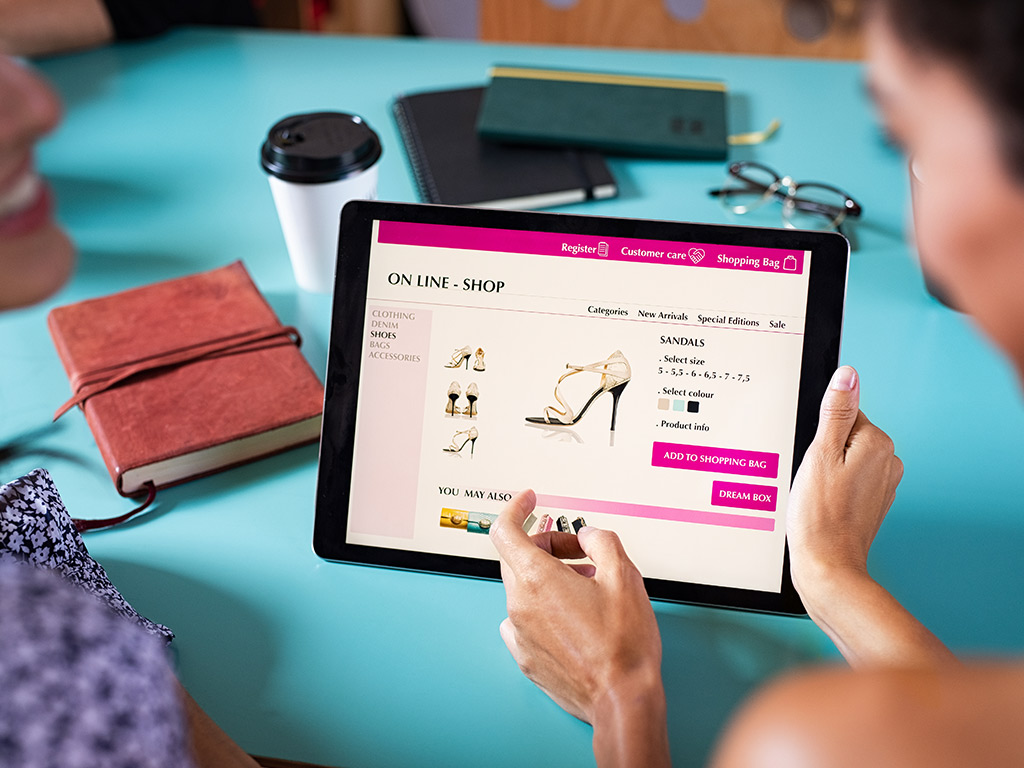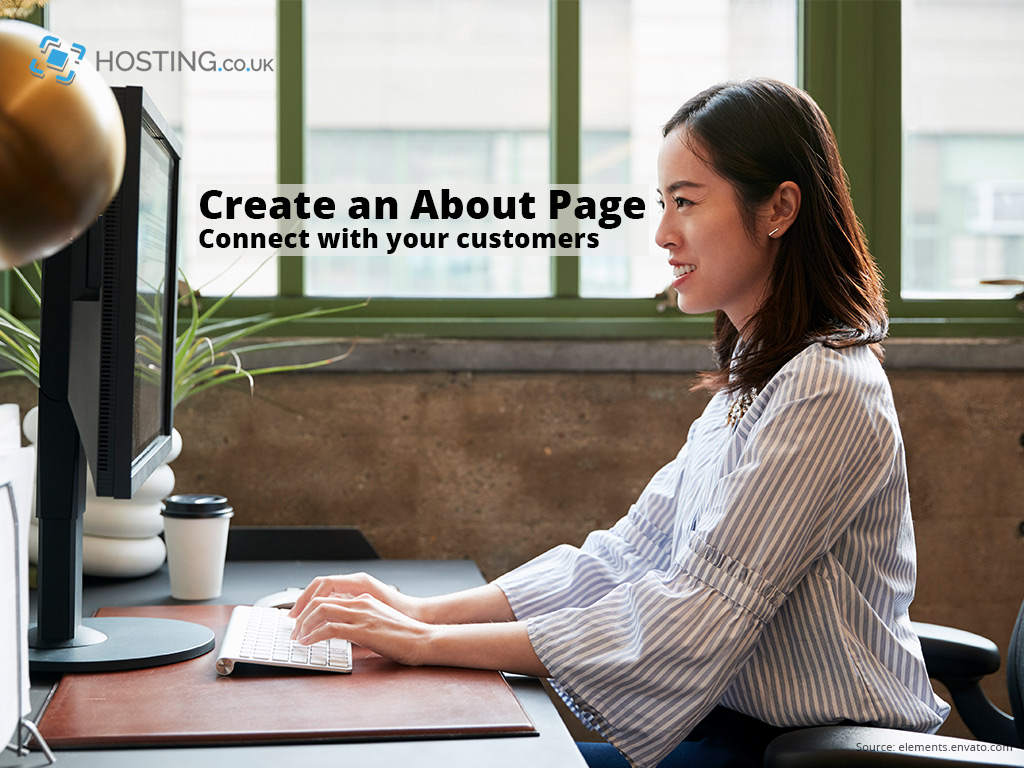Being a trusted brand leader in the eCommerce game goes beyond having a great website, responsive design, excellent branding, and stunning products to keep a constant flow of repeat visitors that convert to sales.
With same-day and two-day delivery speeds, instant gratification has made staying at the forefront of your customer’s mind over your best competition harder than ever.
So how do you engage your customers organically and garner their loyalty and continued engagement?
You need to offer your customers a lot more. Bring them into your world and share with them the story of your brand and the vision of your company. Tell compelling stories that make them believe in your brand and what it stands for. And the best way to do this effortlessly is to have a well-crafted About page on your eCommerce website.
An “About page” can be used to showcase what your brand focus is and what makes your business unique and stand out from the competition.
We’re going to break down why having a great “About page” is crucial to your online store’s success. Beyond that, we will discuss the best practices for crafting a winning About Page and the things you should avoid to stay on top.
Let’s get started.
Table of Contents
The importance of having a winning About page and why you need one
The key purpose of your About page is to weave the story of your brand in a way that humanises it. You want to give your audience the story of how your business got started, what inspired you and continues to motivate you, and discuss what you’re driving passion is for what you do. Every business owner has a story about what compelled them to start and every potential customer wants to hear it.
Storytelling is a powerful medium. For thousands of years, humans have used stories to connect with others and immortalise their culture. Your brand is your culture. Your business needs to tell its story in order to connect with your customers on a human level.
If you want your customers to relate to your brand in a real way then you need to craft your story in a way that they can see themselves clearly in your story. This works best if they are able to identify your method of solving the problem that they have.
How to create an about page
There are 4 must-have components for your about page.
1. Identify the problem:
Whenever someone sets out to start a new business that offers a specific line of products or services they set out to address a problem. When beginning the story of your business’ journey from inception to the realisation you want to start with how you were able to identify the problem your business was going to solve.
2. The realisation of how to fix the problem:
Here you discuss that plan you formulated to address and solve this problem with your product line or services. Basically, this is your ‘ah-ha’ moment when you realised you had an innovative idea that could fix the problem.
3. Expansion on how to help others with the same problem:
Now you outline how you expanded your fix for the problem and how you were lead to help others that may be facing the same problem.
4. Your mission: Through helping others you feel more connected to the world:
Here you discuss how it feels to help others solve the problem and how it allowed you to feel more connected to the world. If your business was inspired by specific charity work or you were inspired by it then this is a great time to express your motivation to spread your brand to everyone in need.
As you can see with this template you are able to craft a compelling story about your brand from its inception to how you brought it to fruition and further explain the mission of your business. Your customers will be able to connect with your journey as something is likely to resonate with them.
If you have years of experience in this field or operating a brick and mortar before launching the online branch then share your years of experience with your customers and the milestones, accolades and achievements you’ve accomplished along the way. While celebrating and highlighting the wins are crucial you want to discuss the pitfalls as well and show how you overcame them through your hard work.
Everyone can relate to the underdog story or a story where obstacles had to be overcome in order to attain a goal or reach a level of success.
Why share your story?

No matter what you decide to sell, be it web hosting or other online products the possibility of opening a physical store and sharing your journey with customers is a must. If you build a successful online business then it can blossoms into a full-blown physical store/s. Using the same example of website hosting, you could start a profitable reseller hosting online business. Then, using the profits, purchase your very own servers and ultimately your own data center or technology company. Your customers will love to connect with these stories. So why not share? Before you start sharing here are a few things that we recommend avoiding.
What to avoid on your About page
We’ve outlined what you should include in your About page but there are definitely somethings you should avoid as a rule of thumb.
Avoid using industry jargon in your About page
Keep your language straightforward and simple. You don’t want to use industry-specific jargon that your customers may not know. The purpose of your About page is to connect with your audience to be real with them.
While you want to sound like an authority in your field, industry jargon tends to sound more pompous and aloof. It creates a disconnect which is the opposite of what you are trying to accomplish.
Make your writing engaging by using plain language that is well crafted. The idea is to bring your personality and passion to the forefront. Remember you are telling a story.
Avoid adding off-brand images

Visual content lends to the value of any page on your website. While a picture can speak volumes you want to carefully curate the images you use on your About page.
The images should carefully demonstrate what your brand is about so that your audience can immediately make the connection.
These images can be as simple as stock images that align with your brand, warm candids of you with your product line, photos of customers with your products etc. your creativity is boundless just ensure that it coincides with your business and its brand awareness.
Avoid creating lists of bland commercial values
This is not the time to use cliché corporate speak. Nothing is more uninspiring than the generic message used on corporate websites. You want the values that are important to you and lead you to create your brand in the first place.
Use this space to unveil your character-driven manifesto about why you’ve chosen to do what you’re doing. If you have great stories from repeat customers you can use them in a testimonial section or just outline how your business has helped your customers achieve their goals or solve their problems.
Avoid oversharing
Do not treat your About page as your Journal or Diary entry. There is a very thin line between being appealing to your audience and oversharing too much with them, so skirt this line with caution.
No one wants to read a sob story. Your business journey should inspire your customers and resonate with them on a human level. When a customer is done reading your About page they should be able to succinctly share what your brand and your business values are about.
Your about page is the story of your business. It should be relatable, engaging but it is not your personal life story or biography.
Avoid using coy or clever calls-to-action
Be very clear about the intention here. In the end, you can lead the reader know that they can contact your for more information, browse a product catalogue, sign-up for your newsletter or free opt-in, etc. whatever the call-to-action makes it very clear.
Avoid using video alone
Add video content to your About page is a great way to bring brand awareness and add value to your page’s content. The best practice here though is to have it before the text of your business’ story and keep it succinct, 1 min tops.
Truth is not everyone enjoys video content. Depending on where your customer is accessing your website, they may not be in the position to watch a video, or a lengthy one outlining your brand’s story. A quick promo video at the beginning or end of the text is best.
Avoid skipping out on SEO
Every page on your website should be optimised for search engines, including your About page and that is why you should avoid missing out on SEO.
Using keywords in your business’ story will help search engines index your site based on its purpose. When a customer has a specific problem and types it into Google you want your page to appear in the first 5 results. A well-crafted About page has the potential to generate thousands of organic page views solely based off of good SEO practices.
Make sure you add an appropriate call-to-action at the end of your About page so that you can grab this influx of traffic, through an email sign-up/opt-in, contact form, or invitation to browse products.
In the End
A kind reminder that you are an authority in your industry and the regardless of the business you customers need you. They need the products or services you have that will help solve their problems, teach them how to do something, or simply provide a need or a want. Your customer also deserves your story. They are entitled to having the full rundown of why you do what you do and they deserve to connect and engage with your journey. This will help boost your brand awareness and overall success moving forward.
